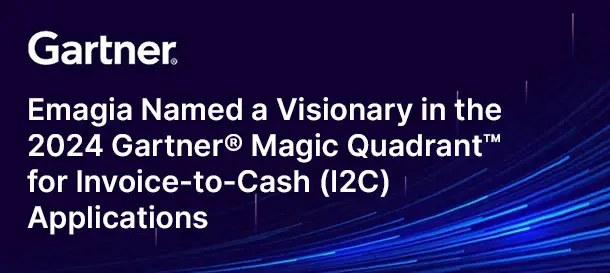Interest rates are increasing, meaning new capital costs are going up. This occurrence reinforces the pandemic-revived focus on improving accounts receivables (AR) management to optimize cash flow and support cash management. Many organizations have cash trapped in their balance sheets for too long. Optimizing working capital can free more cash. That encompasses accounts receivable, accounts payable, cash management and inventory. Optimizing these brings greater liquidity, while the operational efficiencies will provide time and cost savings.
There are several areas where enterprises should look to optimize accounts receivable and the order-to-cash process. But four areas of significant impact are credit, invoicing, cash application and collections.
Large enterprises have formal accounts receivable policies governing billing and collections. But there are often gaps between policies and practices, and closing those gaps can improve cash flow.
Optimizing Accounts Receivable
Credit sales, accounts receivable, collections, and cash application are discrete, multifaceted functions that impact one another. Organizations can optimize each area by consistently following best practices but further by automating them.
Credit
Offering too-easy credit, too many discounts, and ignoring terms can plague a company that prioritizes sales above all else. Management bears the responsibility to set the agenda and balance priorities. It must determine the course for the business, develop policies and enforce them.
Credit is a vast topic, and it is not the purpose here to detail proven practices. Sound credit policies and procedures strive to strike the balance of promoting sales and protecting the enterprise. Timely credit decisions are essential to customer experience, which is directly tied to customer relations and responsiveness and optimizing the O2C cycle.
Granting credit and setting credit limits have several elements, each with numerous components and steps. These include the credit application and review process, reference checks, whether with trade groups or banks, and credit bureau review. A credit department must process all that information for scoring and assigning risk levels. Of course, that’s for new customers. Periodic review of existing customers is also necessary to increase sales and guard against slow or non-payment.
Today’s automated credit applications empowered with AI, bots, massive data storage, automatic data capture and conversion, digital assistants and analytics can take over all these functions. The result is that an enterprise can get a credit decision on the same day instead of a week or two to the same day.
Invoicing
Billing is the next critical step once the company has made and fulfilled a sale. The organization must invoice customers timely. For fast payment, invoices must be accurate and complete according to the customer’s requirements. Incomplete or inaccurate invoices get set aside rather than paid. Ideally, the invoices are also electronic, thereby cheaper and faster than paper or PDF.
An EIPP (electronic invoice presentment and payment) system benefits the enterprise by the speed and ease of invoice delivery. It also provides customers 24/7 access to invoices via a self-service portal, often enabling swift resolution of questions and disputes.
Global enterprises often have timely billing built into their process, but if they are issuing paper invoices or emailing PDFs, they have a built-in delay in seeing the invoice paid.
Cash Application
When an enterprise receives a customer payment, it’s vital to apply the payment to the right customer and the invoice, and on a timely basis—failure to correctly apply cash leads to confusion, customer frustration and a clean-up ordeal. Failure to apply cash timely leads to a wasted effort by collections and unhappy customers. Auto-cash engines in ERP and other systems are essential to minimize manual cash application.
The biggest bottleneck in cash application is capturing and converting remittance information, which comes in many different forms and formats. Cognitive data capture, or intelligent data capture (IDP), uses AI and machine learning to optimize the process. It quickly converts remittance information into structured data and pairs it with the payment to match the invoice. To effectively optimize cash application, IDP is a must.
The best IDP systems capture remittance information in various languages and currencies. Combined with an AI-driven auto-match engine, such systems increase the speed and match rates and enable touchless auto-capture for 95 percent or more of payments.
Collections
Enterprises need sound policies around collections and adherence by others in the organization to credit, invoicing and other policies. Most of all, collections needs information. But it often operates blindly. Most collections departments cannot access accurate information in real-time. In addition, volumes demand prioritization of the largest customers and invoices. Consequently, small and mid-dollar customers go untouched and aging invoices unchecked.
As inferred from the information above, automation of other areas in order-to-cash is part of optimizing collections. Appropriate terms, accurate electronic invoice delivery, and AI-powered document processing and cash application mean more timely and accurate information for the collections department. These offer a significant advantage provided that the organization’s system reports information effectively, as the leading collections applications do.
Collections automation automatically organizes and prioritizes collection activity. AI-supported, rules-driven collection automation can treat each customer uniquely. It also includes dispute resolution with tools that uncover root causes and display escalation and resolution
status.
Leading collections applications include digital assistants (DAs) to optimize collections further. DAs help collections through automated communication with all the enterprise’s customers with natural language processing enabling text or spoken conversations. The DA offers customers options to pay and documents and follows up on promises to pay. The 100 percent customer touch allows the enterprise to keep customer payments on track.
Summary
Optimizing AR and the order-to-cash process shortens the time to pay and makes more of an enterprise’s cash available. Cash conversion has become increasingly important with the pandemic and the increasing cost of capital borrowing. Sound AR policies aided by AI-enabled automation offer a path to optimize AR. Enterprises can implement such automation by individual functions or as a complete, integrated system. Automation of AR and order-to-cash processes guarantees policies are practiced and provides consistency of application, comprehensive customer contact, elimination of human error, increased accuracy, and considerable time condensation.





